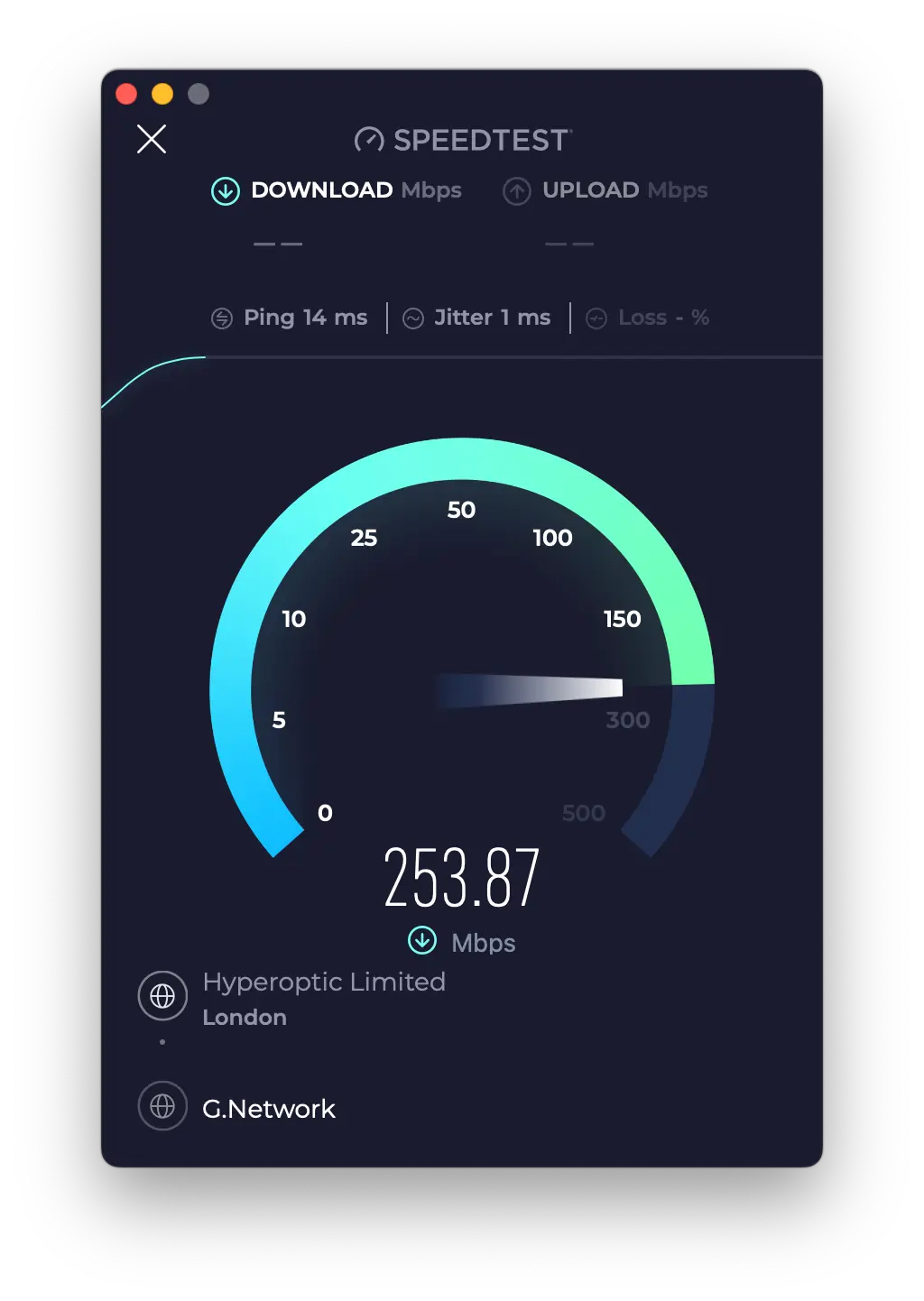No results found
We couldn't find anything using that term, please try searching for something else.

Evolution of topics and trends in emerging research fields: multiple analyses with entity linking, Mann-Kendall test and burst methods in cloud computing
Alhomdy, S., Thabit, F., Abdulrazzak, F. A. H., Haldorai, A., & Jagtap, S. (2021). The role of cloud computing technology: A savior to fight the l
-
Alhomdy, S., Thabit, F., Abdulrazzak, F. A. H., Haldorai, A., & Jagtap, S. (2021). The role of cloud computing technology: A savior to fight the lockdown in COVID 19 crisis, the benefits, characteristics and applications. International Journal of Intelligent Networks , 2, 166–174. https://doi.org/10.1016/j.ijin.2021.08.001
Article
Google Scholar
-
Ali, O., Shrestha, A., Osmanaj, V., & Muhammed, S. (2020). Cloud computing technology adoption: An evaluation of key factors in local governments. Information Technology & People, 34(2), 666–703. https://doi.org/10.1108/ITP-03-2019-0119
Article
Google Scholar
-
Ali, R. O., & Abubaker, S. R. (2019). Trend analysis using Mann–Kendall, Sen’s slope estimator test and innovative trend analysis method in Yangtze River basin, China. International Journal of Engineering & Technology, 8( 2 ) , 110–119 .
Google Scholar
-
Al-Ruithe, M., Benkhelifa, E., & Hameed, K. (2018). Key issues for embracing the cloud computing to adopt a digital transformation: A study of Saudi public sector. Procedia Computer Science, 130, 1037–1043.
Article
Google Scholar
-
Ayaz, A., Celik, K., & Ozyurt, O. (2021). Pattern detection in cloud computing: Bibliometric mapping of publications in the field from past to present. COLLNET Journal of scientometric and Information Management , 15(2), 469–494.
Article
Google Scholar
-
Baumann, M. (2015). Historic and potential technology transition paths of grid battery storage: Co-evolution of energy grid, electric mobility and batteries ( No . 02/2015 ) . Universidade Nova de Lisboa , IET / CICS . NOVA – Interdisciplinary Centre on Social Sciences , Faculty of Science and Technology .
-
bird , a. ( 2022 ) . Thomas Kuhn . In E.N. Zalta ( Ed . ) ,The Stanford encyclopedia of philosophy (Spring 2022 Edition). https://plato.stanford.edu/archives/spr2022/entries/thomas-kuhn/.
-
Blei, D. M., Lafferty, J. D. (2006). Dynamic topic models. In Proceedings of the 23rd international conference on machine learning ( pp . 113–120 ) . https://doi.org/10.1145/1143844.1143859
-
Blei, D. M. (2012). Probabilistic topic models. communication of the ACM , 55(4), 77–84. https://doi.org/10.1145/2133806.2133826
Article
Google Scholar
-
Blei, D. M., Ng, A. Y., & Jordan, M. I. (2003). Latent Dirichlet allocation. The Journal of Machine Learning Research, 3, 993–1022.
Google Scholar
-
Brem Petra A. , Nylund Saeed , Roshani . ( 2023 ) . unpack the complexity of crisis innovation : a comprehensive review of ecosystem – level response to exogenous shock .Abstract Review of Managerial Science 18( 8) , 2441–2464 . https://doi.org/10.1007/s11846-023-00709-x
-
Burgin, M., Eberbach, E., & Mikkilineni, R. (2019). Cloud computing and cloud automata as a new paradigm for computation. Computer Reviews Journal, 4, 113–134.
Google Scholar
-
Buyya, R., Yeo, C. S., Venugopal, S., Broberg, J., & Brandic, I. (2009). Cloud computing and emerging IT platforms: Vision, hype, and reality for delivering computing as the 5th utility. Future Generation Computer Systems , 25(6), 599–616.
Article
Google Scholar
-
Cai, Y., Lu, W., Wang, L., & Xing, W. (2015). Cloud computing research analysis using bibliometric method. International Journal of Software Engineering and Knowledge Engineering, 25(03), 551–571.
Article
Google Scholar
-
Chen, B., Tsutsui, S., Ding, Y., & Ma, F. (2017). Understanding the topic evolution in a scientific domain: An exploratory study for the field of information retrieval. Journal of Informetrics , 11(4), 1175–1189. https://doi.org/10.1016/j.joi.2017.10.003
Article
Google Scholar
-
Coccia, M. (2017). Sources of technological innovation: Radical and incremental innovation problem-driven to support competitive advantage of firms. Technology Analysis & Strategic Management, 29(9), 1048–1061. https://doi.org/10.1080/09537325.2016.1268682
Article
Google Scholar
-
Coccia , M. ( 2018 ) . classification of innovation consider technological interaction .Journal of Economics Bibliography, 5( 2 ) , 76–93 . https://doi.org/10.1453/jeb.v5i2.1650
Article
Google Scholar
-
Coccia , M. ( 2018a ) . general property of the evolution of research field : a scientometric study of human microbiome evolutionary robotic and astrobiology .scientometric , 117(2), 1265–1283. https://doi.org/10.1007/s11192-018-2902-8
-
Coccia, M. (2019). What is technology and technology change? A new conception with systemic-purposeful perspective for technology analysis. Journal of Social and Administrative Sciences, 6(3), 145–169. https://doi.org/10.1453/jsas.v6i3.1957
-
Coccia, M. (2020). Destructive technologies for industrial and corporate change. In A. Farazmand (Ed.), Global encyclopedia of public administration, public policy, and governance. Cham: Springer. https://doi.org/10.1007/978-3-319-31816-5_3972-1
Chapter
Google Scholar
-
Coccia, M. (2020a). The evolution of scientific disciplines in applied sciences: dynamics and empirical properties of experimental physics. scientometric , 124(1), 451–487. https://doi.org/10.1007/s11192-020-03464-y
-
Coccia , M. ( 2024a ) . converge artificial intelligence and quantum technology : accelerated growth effect in technological evolution .Technologies, 12(5), 66. https://doi.org/10.3390/technologies12050066
-
Coccia, M. (2024b). The general theory of scientific variability for technological evolution. Science, 6(2), 31. https://doi.org/10.3390/sci6020031
-
Coccia M. , Bozeman B. ( 2016 ) . Allometric model to measure and analyze the evolution of international research collaboration .scientometric , 108( 3 ) , 1065–1084 . https://doi.org/10.1007/s11192-016-2027-x
-
Coccia, M. (2021). Technological innovation. In G. Ritzer & C. Rojek (Eds.), The Blackwell encyclopedia of sociology. Wiley. https://doi.org/10.1002/9781405165518.wbeost011.pub2
Chapter
Google Scholar
-
Coccia, M. (2022). Probability of discoveries between research fields to explain scientific and technological change. Technology in Society, 68, 101874. https://doi.org/10.1016/j.techsoc.2022.101874
Article
Google Scholar
-
Coccia , M. 2024 . technological trajectory in quantum computing to design a quantum ecosystem for industrial change .Technology Analysis & Strategic Management, 36( 8) , 1733–1748 . https://doi.org/10.1080/09537325.2022.2110056
-
Coccia M; Roshani M. (2024). Path-breaking directions in quantum computing technology: A patent analysis with multiple techniques. Journal of the Knowledge Economy. https://doi.org/10.1007/s13132-024-01977-y
-
Costas, R., Corona-Sorbino, C., Robinson-Garcìa, N. (2024). Handbook of meta-research could ORCID play a key role in meta-research? Discussing new analytical possibilities to study the dynamics of science and scientists. Edward Elgar Publishing 215–232
-
Coccia M., Roshani, S. (2024a). General laws of funding for scientific citations: how citations change in funded and unfunded research between basic and applied sciences. Journal of Data and Information Science , 9(1), 1–18. https://doi.org/10.2478/jdis-2024-0005
-
Coccia, M., Roshani, S. (2024b). Research funding and citations in papers of nobel laureates in physics, chemistry and medicine, 2019-2020. Journal of Data and Information Science , 9(2), 1–25. https://doi.org/10.2478/jdis-2024-0006
-
Coccia Lili M , Wang ( 2016 ) evolution and convergence of the pattern of international scientific collaboration .Significance proceeding of the National Academy of Sciences , 113( 8) , 2057–2061 . https://doi.org/10.1073/pnas.1510820113
-
Coccia, M., Watts J. 2020. A theory of the evolution of technology: technological parasitism and the implications for innovation management. Journal of Engineering and Technology Management , 55, 101552, https://doi.org/10.1016/j.jengtecman.2019.11.003
-
Coccia , M. , Roshani S. , Mosleh M. ( 2021 ) . scientific development and new technological trajectory in sensor .Research Sensors, 21(23), 7803. https://doi.org/10.3390/s21237803
-
Coccia, M., Mosleh, M., & Roshani, S. (2024). Evolution of quantum computing: Theoretical and innovation management implications for emerging quantum industry. IEEE Transactions on Engineering Management , 71, 2270–2280. https://doi.org/10.1109/TEM.2022.3175633
Article
Google Scholar
-
Coccia, M., & Roshani, S. (2024). Evolutionary phases in emerging technologies: Theoretical and managerial implications from quantum technologies. IEEE Transactions on Engineering Management. https://doi.org/10.1109/TEM.2024.3385116
Article
Google Scholar
-
Coccia, M., Roshani, S., & Mosleh, M. (2022). Evolution of sensor research for clarifying the dynamics and properties of future directions. Sensors, 22(23), 9419. https://doi.org/10.3390/s22239419
Article
Google Scholar
-
Cornolti, M., Ferragina, P., & Ciaramita, M. (2013). A framework for benchmarking entity-annotation systems. In Proceedings of the 22nd international conference on World Wide Web (pp. 249–260).
-
Cresswell, K., Hernández, A. D., Williams, R., & Sheikh, A. (2022). Key challenges and opportunities for cloud technology in health care: Semistructured interview study. JMIR Human Factors, 9( 1 ) , e31246 .
Article
Google Scholar
-
Curiac, C. D., & Micea, M. V. (2023). Identifying hot information security topics Using LDA and multivariate Mann–Kendall test. IEEE Access, 11, 18374–18384.
Article
Google Scholar
-
Cuzzola, J., Jovanović, J., Bagheri, E., & Gašević, D. (2015). Evolutionary fine-tuning of automated semantic annotation systems. Expert Systems with application , 42( 20 ) , 6864–6877 .
Article
Google Scholar
-
Darwish, A., Hassanien, A. E., Elhoseny, M., Sangaiah, A. K., & Muhammad, K. (2019). The impact of the hybrid platform of internet of things and cloud computing on healthcare systems: Opportunities, challenges, and open problems. Journal of Ambient Intelligence and Humanized Computing, 10, 4151–4166.
Article
Google Scholar
-
Dernis, H., Squicciarini, M., & de Pinho, R. (2016). Detecting the emergence of technologies and the evolution and co-development trajectories in science (DETECTS): A ‘burst ’analysis-based approach. The Journal of Technology Transfer, 41, 930–960.
Article
Google Scholar
-
Ebadi, A., Tremblay, S., Goutte, C., & Schiffauerova, A. (2020). Application of machine learning techniques to assess the trends and alignment of the funded research output. Journal of Informetrics , 14( 2 ) , 101018 .
Article
Google Scholar
-
Erdogmus, H. (2009). Cloud Computing: Does Nirvana Hide Behind the Nebula? IEEE Software, 26( 2 ) , 4–6 .
Article
Google Scholar
-
Falagas, M. E., Pitsouni, E. I., Malietzis, G. A., & Pappas, G. (2008). Comparison of PubMed, Scopus, web of science, and Google scholar: Strengths and weaknesses. The FASEB Journal, 22(2), 338–342.
Article
Google Scholar
-
Ferragina, P., & Scaiella, U. (2010). Tagme: On-the-fly annotation of short text fragments (by wikipedia entities). In Proceedings of the 19th ACM international conference on Information and knowledge management (pp. 1625–1628).
-
Ghazinoori, S., Roshani, S., Hafezi, R., & Wood, D. A. (2023). Bursting into the Public Eye: Analyzing the Development of Renewable Energy Research Interests. renewable Energy Focus , 47, 100496.
Article
Google Scholar
-
Gohr, A., Hinneburg, A., Schult, R., & Spiliopoulou, M. (2009). Topic evolution in a stream of documents. In Proceedings of the 2009 SIAM international conference on data mining (Vol. 1, pp. 859–870). https://doi.org/10.1137/1.9781611972795.74
-
Hafezi, R., Zare, S. G., Taghikhah, F. R., & Roshani, S. (2024). How Universities Study the Future: A Critical View. Futures, 103439.
Article
Google Scholar
-
Hamed, K. H., & Rao, A. R. (1998). A modified Mann–Kendall trend test for autocorrelated data. Journal of Hydrology, 204( 1–4 ) , 182–196 .
Article
Google Scholar
-
Hassanzadeh, A., Namdarian, L., Majidpour, M., & Elahi, S. B. (2015). Developing a model to evaluate the impacts of science, technology and innovation foresight on policy-making. Technology Analysis & Strategic Management, 27(4), 437–460.
-
Heilig, L., & Voß, S. (2014). A scientometric analysis of cloud computing literature. IEEE Transactions on Cloud Computing , 2(3), 266–278.
Article
Google Scholar
-
Hoberg, P., Wollersheim, J. & Krcmar, H. (2012). The business perspective on cloud computing—A literature review of research on cloud computing. In AMCIS 2012 Proceedings (Vol. 5). http://aisel.aisnet.org/amcis2012/proceedings/EnterpriseSystems/5
-
Hofmann, T. (1999). Probabilistic latent semantic indexing. In Proceedings of the 22nd annual international ACM SIGIR conference on Research and development in information retrieval (pp. 50–57).
-
Huang, J. Y., & Chen, R. C. (2019). Exploring the intellectual structure of cloud patents using non-exhaustive overlaps. scientometric , 121(2), 739–769.
Article
Google Scholar
-
Hussain, M., & Mahmud, I. (2019). pyMannKendall: A python package for non-parametric Mann Kendall family of trend tests. Journal of Open Source Software, 4(39), 1556. https://doi.org/10.21105/joss.01556
Article
Google Scholar
-
Huang, Hung-Tu., Hsu, Jia-Yen. (2017). Technology–function matrix based network analysis of cloud computing. scientometric , 113( 1 ) , 17 – 44 . https://doi.org/10.1007/s11192-017-2469-9
-
Jacobides, M. G., Brusoni, S., & Candelon, F. (2021). The evolutionary dynamics of the artificial intelligence ecosystem. Strategy Science, 6(4), 412–435.
Article
Google Scholar
-
Kale, M., & Mente, R. (2017). Impact of cloud computing on education system. International Journal of Electronics , Electrical and Computational System IJEECS , 6(11), 139–144.
Google Scholar
-
Kendall, M. G. (1975). Rank correlation methods (4th ed.). Charles Griffin.
Google Scholar
-
Kleinberg , J. ( 2002 ) . bursty and hierarchical structure in stream . InProceedings of the eighth ACM SIGKDD international conference on knowledge discovery and data mining ( pp . 91–101 ) .
-
Kuhn T. ( 1962 ) .The structure of scientific revolution (1970, 2nd ed., with postscript). University of Chicago Press.
-
Landauer, T. K., Foltz, P. W., & Laham, D. (1998). An introduction to latent semantic analysis. Discourse Processes , 25(2–3), 259–284.
Article
Google Scholar
-
Latifian, A. (2022). How does cloud computing help businesses to manage big data issues. Kybernetes: the International Journal of Systems & Cybernetics, 51(6), 1917–1948. https://doi.org/10.1108/K-05-2021-0432
Article
Google Scholar
-
Linnenluecke, M. K., Marrone, M., & Singh, A. K. (2020). Conducting systematic literature reviews and bibliometric analyses. Australian Journal of Management , 45( 2 ) , 175–194 .
Article
Google Scholar
-
Liu, Y., & Wang, T. (2022). Quality factors and performance outcome of cloud-based marketing system. Kybernetes, 51(1), 485–503. https://doi.org/10.1108/K-11-2020-0778
Article
Google Scholar
-
Liu, Z., Liu, Y., Guo, Y., & Wang, H. (2013). Progress in global parallel computing research: A bibliometric approach. scientometric , 95(3), 967–983.
Article
Google Scholar
-
Lyu, Y., Li, W., Guo, Q., & Wu, H. (2024). Mapping knowledge landscapes and emerging trends of Marburg virus: A text-mining study. Heliyon, 10(8), e29691. https://doi.org/10.1016/j.heliyon.2024.e29691
-
Madlock-Brown, C. R. (2014). A framework for emerging topic detection in biomedicine. The University of Iowa .
-
Mane, K. K., & Börner, K. (2004). Mapping topics and topic bursts in PNAS. proceeding of the National Academy of Sciences , 101( suppl_1 ) , 5287–5290 .
Article
Google Scholar
-
Mann, H. B. (1945). Nonparametric tests against trend. Econometrica, 13(3), 245. https://doi.org/10.2307/1907187
-
Marrone , M. ( 2020 ) . application of entity link to identify research front and trend .scientometric , 122( 1 ) , 357–379 . https://doi.org/10.1007/s11192-019-03274-x
Article
Google Scholar
-
Marrone, M., Lemke, S., & Kolbe, L. M. (2022). Entity linking systems for literature reviews. scientometric. https://doi.org/10.1007/s11192-022-04423-5
Article
Google Scholar
-
Mell, P., & Grance, T. (2010). The NIST Definition of Cloud Computing. communication of the ACM , 53(6), 50.
Google Scholar
-
Mosleh, M., Roshani, S., & Coccia, M. (2022). Scientific laws of research funding to support citations and diffusion of knowledge in life science. scientometric , 127( 4 ) , 1931–1951 . https://doi.org/10.1007/s11192-022-04300-1 .
-
Nallola, S. R., & Ayyasamy, V. (2023). Insights on cloud computing: A bibliometric analysis [Preprint]. In Review. https://doi.org/10.21203/rs.3.rs-3012428/v1
-
Nederhof, A., & Van Wijk, E. (1997). Mapping the social and behavioral sciences world-wide: Use of maps in portfolio analysis of national research efforts. scientometric , 40( 2 ) , 237–276 .
Article
Google Scholar
-
NIST. (2022). Final version of NIST cloud computing. Updated January 8, 2018. Retrieved February 2022, from https://www.nist.gov/news-events/news/2011/10/final-version-nist-cloud-computing-definition-published.
-
Padilla, R. S., Milton, S. K., & Johnson, L. W. (2015). Components of service value in business-to-business cloud computing. J Cloud Comp, 4, 15. https://doi.org/10.1186/s13677-015-0040-x
Article
Google Scholar
-
Papazoglou M. P., & Vaquero L. M. (2012). Knowledge-intensive cloud services: Transforming the cloud delivery stack, knowledge service engineering handbook (pp. 449–494). Taylor & Francis Group.
-
Roshani, S., Coccia, M., Mosleh, M. (2022). Sensor technology for opening new pathways in diagnosis and therapeutics of breast lung colorectal and prostate cancer. HighTech and Innovation Journal, 3(3), 356–375. https://doi.org/10.28991/HIJ-2022-03-03-010
-
Saheb, T., Dehghani, M., & Saheb, T. (2022). Artificial intelligence for sustainable energy: A contextual topic modeling and content analysis. sustainable Computing : Informatics and Systems , 35, 100699.
Google Scholar
-
Sci2 Team. (2009). Science of Science (Sci2) Tool. Indiana University and SciTech Strategies. Retrieved November 24, 2016, from https://Sci2.cns.iu.edu.
-
Sharma, D., Kumar, B., & Chand, S. (2019). A trend analysis of machine learning research with topic models and Mann–Kendall test. International Journal of Intelligent Systems and Applications., 11(2), 70–82. https://doi.org/10.5815/ijisa.2019.02.08
Article
Google Scholar
-
Singh, V. K., Singh, P., Karmakar, M., Leta, J., & Mayr, P. (2021). The journal coverage of web of science, Scopus and dimensions: A comparative analysis. scientometric , 126, 5113–5142.
Article
Google Scholar
-
Sun, X., Kaur, J., Milojevic’, S., Flammini, A., & Menczer, F. (2013). Social dynamics of science. scientific report , 3(1069), 1–6. https://doi.org/10.1038/srep01069
Article
Google Scholar
-
Wagiu , EB . , Liu , C. -M. , Palopak , Y. ( 2024 ) . mapping technological trajectory of edge computing : A citation graph analysis .IEEE Internet of Things Journal, 11(9), 16545–16560. https://doi.org/10.1109/JIOT.2024.3355056
-
Wang, Y., Agichtein, E., & Benzi, M. (2012). TM-LDA: Efficient online modeling of latent topic transitions in social media. In Proceedings of the 18th ACM SIGKDD international conference on knowledge discovery and data mining (pp. 123–131). https://doi.org/10.1145/2339530.2339552
-
Wang, J., & Hsu, C. C. (2021). A topic-based patent analytics approach for exploring technological trends in smart manufacturing. Journal of Manufacturing Technology Management, 32(1), 110–135.
Article
Google Scholar
-
Wang, N., Liang, H., Jia, Y., Ge, S., Xue, Y., & Wang, Z. (2016). Cloud computing research in the IS discipline: A citation/co-citation analysis. decision Support Systems , 86, 35–47.
Article
Google Scholar
-
Web of Science (WOS). (2021). Documents. Retrieved November 20, 2021, from https://www.webofscience.com/wos/woscc/basic-search
-
Xu, S., Hao, L., Yang, G., Lu, K., & An, X. (2021). A topic models based framework for detecting and forecasting emerging technologies. Technological Forecasting and Social Change, 162, 120366.
Article
Google Scholar
-
Yang, H., & Tate, M. 2012. A descriptive literature review and classification of cloud computing research. Communications of the Association for Information Systems. https://doi.org/10.17705/1CAIS.03102
-
Zhang, S., & Lu, X. X. (2009). Hydrological responses to precipitation variation and diverse human activities in a mountainous tributary of the lower Xijiang, China. CATENA , 77( 2 ) , 130–142 .
Article
Google Scholar
-
Zhao, W., Chen, J. J., Perkins, R., et al. (2015). A heuristic approach to determine an appropriate number of topics in topic modeling. BMC Bioinformatics, 16(Suppl 13), S8. https://doi.org/10.1186/1471-2105-16-S13-S8
Article
Google Scholar





